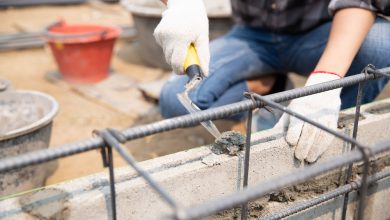What An Oil Change Does To Your Boat Engine – How Often Do You Need One?

Whether you use your boat often or just set sail during the summer months, your engine needs an outboard oil change. Frequent changes can prevent engine breakdowns. It can also help extend engine life by hundreds or even thousands of hours.
Boat engine manufacturers will recommend a complete engine maintenance plus an oil change every 100 hours. If you don’t use your boat that much, you must change your oil at least once every year. Check your manufacturer’s manual to find out the exact number of hours for an oil change.
Oil Change for Gasoline vs. Diesel Engines
An oil change is recommended for every 100 engine hours for gasoline boat engines. Meanwhile, diesel engines need an oil change every 50 hours. This is because gasoline is cleaner compared to diesel. Overlooking these recommendations can take a toll on your boat engine.
When dirty or contaminated oil is left inside the engine, contaminants and dirt can destroy the internal components of an engine. Your boat may stay idle, which is very common during the cold months, but old oil must be removed at once. This should be replaced with new, clean oil. Most boat owners prefer to winterize their boat engines where an oil change is included in the preparations. Winterization will ensure that your boat is ready once the cold season is over.
How is an Oil Change Done?
What do a boat oil change and car oil change have in common? Both are messy and, thus, often overlooked. Draining old boat engine oil can sometimes be very complicated as the drain plug is often unreachable or missing. There is also the problematic placement of the oil drain pan as there is very little space under the boat engine.
But there are some workarounds to a messy oil change. Here are some of the most recommended techniques.
Drain Old Oil from the Drain Plug
A roasting pan is a good alternative instead of using a regular oil tray that is too big to fit under the engine. This is a foil pan that’s available in supermarkets. Put some water on the pan first to ensure that it is cold enough to hold all the old oil from the engine. And to avoid messy oil changes, place newspapers or old absorbent cloth underneath the oil pan.
Instead of a roasting pan, you may also use a plastic or garbage bin bag. Tie the tip of the oil drain to the plastic bag with a rubber band. This way, the oil will drain into the plastic bag without a mess.
If you can reach the drain plug, use a longer hose fitting to allow the old oil to drain into a container lower than the boat. There are oil change kits with this kind of hose fitting, but you can readily assemble your own using oil-resistant hosing.
If there is very little space lower than the boat engine, you can use a pump to remove all the oil from the engine. Install a pump permanently on a compartment located near the engine. Having a pump ready can help you remove old oil more efficiently and quickly.
You may use a manual pump that works by cranking the handle. Old oil will be pumped out of the engine without a lot of mess. If you can afford one, you may want to go with an electric oil pump. Flip the switch, and out comes the old oil. An electric pump is recommended for hot oil.
Drain Old Oil from the Dipstick
The trusty drain plug is nonexistent in some boat engines. Thus, the only way to remove old oil is from the engine’s dipstick. This is a threaded tube, and the oil change pump can screw on the dipstick tube. By pulling the handle several times, you can remove old oil without a mess.
Draining through the dipstick tube is very convenient. You may also attach the pump to a bulkhead and connect the attachment to the dipstick through a threaded hose. For this, you may use an ordinary garden hose.
But what if the engine dipstick tube has no threads? Connect a pick-up tube connected through the dipstick to remove the old oil. Pick-up tubes with oil-change pumps are made from plastic with a small diameter. If you find this too flimsy, you may replace this tube with brass tubing. Make sure that your brass tubing can reach the bottom of your oil pan. Place the oil pan to the pump using a rubber hosing. Make oil changes more efficient and less messy by mounting your pump on a bulkhead.
Before Draining Old Oil
There’s a trick to ensure successful oil changes. It would be best if you did it after you run the engine till it’s hot as warm oil can quickly move through a pump hose or a brass straw. Before you start draining the oil tank and changing old oil, warm the engine first.
Also, old oil contains contaminants, chemical impurities, and other abrasive particles. This dirt tends to accumulate at the bottom of the oil, especially when the oil is cold. Thus, sucking cold oil can leave most of the dirty particles behind. These particles will only contaminate new oil.
As your engine gets hotter, you’re now ready to suck out the oil from the tank. Remove the drain plug using a socket wrench until it’s loose. Use your hand to remove the plug.
Always Change the Oil Filter
Whether you change the engine oil every 50 or 100 hours, you must also change the filter. Almost all oil filters are positioned vertically to avoid spills when opening the filter. However, some filters are mounted either diagonally or horizontally, which only results in spillage. If you find that your filter is mounted this way, cover the filter with a small bag before unscrewing it to avoid spills and messes.
If your engine is older, expect to find cartridge filters with a center bolt that keeps the filter in place. To remove the old filter, remove the bolt from the canister. Discard old cartridges and clean the filter housing with kerosene. Afterward, place the new filter cartridge.
It’s Time to Add New Oil
When you’re done replacing the old filter, it’s time to add the new oil. Each engine type has a specific type of engine oil with a viscosity and API grade. The engine manufacturer usually recommends this and is included in your boat engine manual.
If you have a screw-top oil container, pour the new oil in the opening at the top of the boat engine. If there is not enough space to move around, use a funnel and a hose to pour the new engine oil safely. When filling the pump with fresh oil, don’t forget to wipe all spills and messes.
Final Words
Always remember your boat’s outboard oil change schedule. Adhere to a strict oil change and oil filter change schedule, and you’ll save your engine from damage and repairs. With a clean and powerful engine, you can guarantee more travel and fun on your trusty boat.




